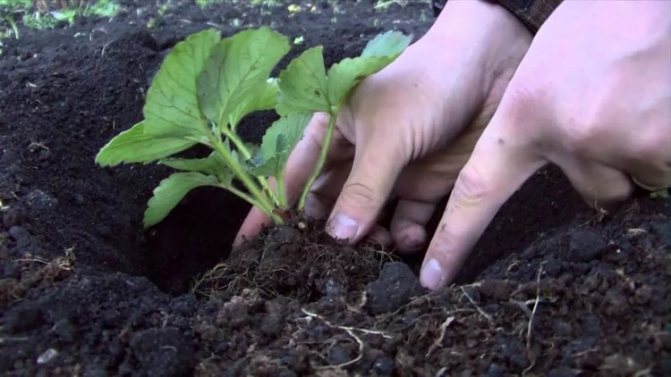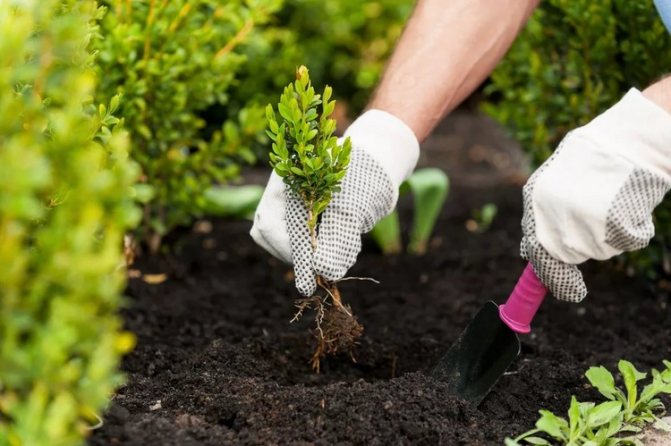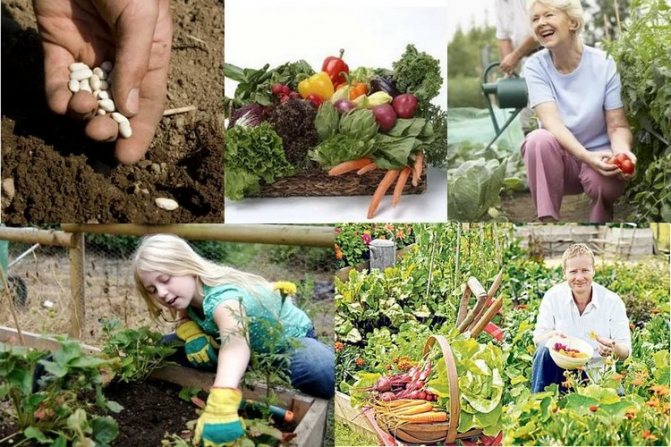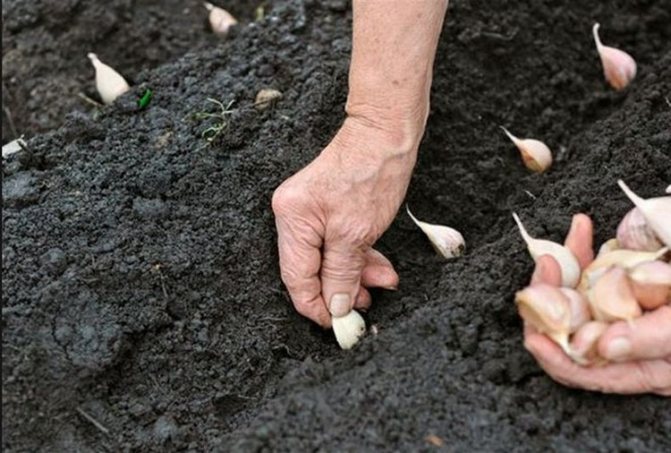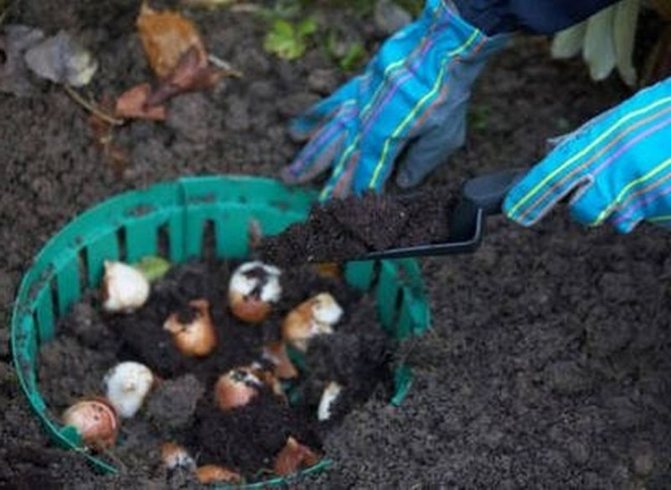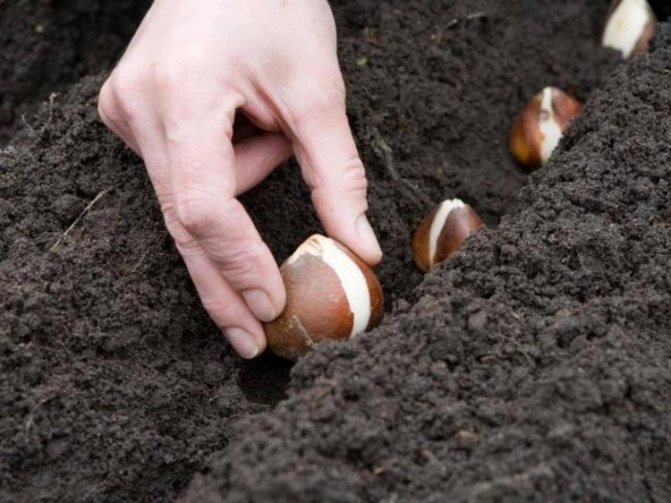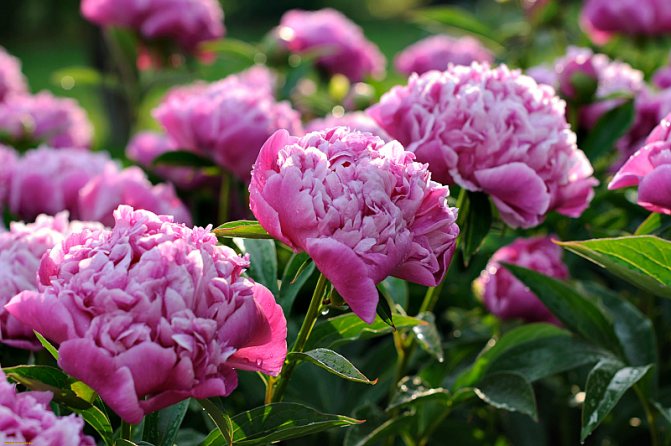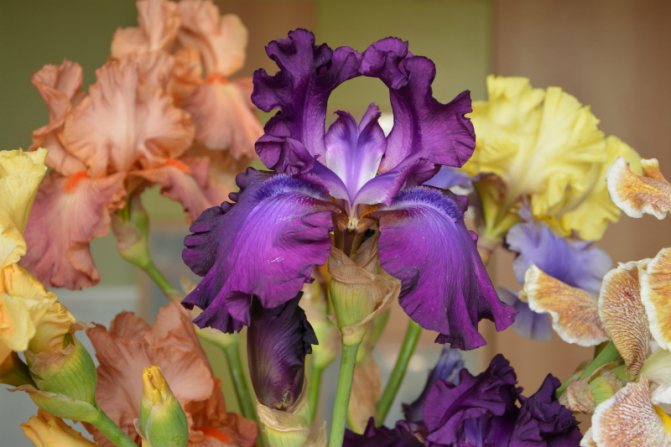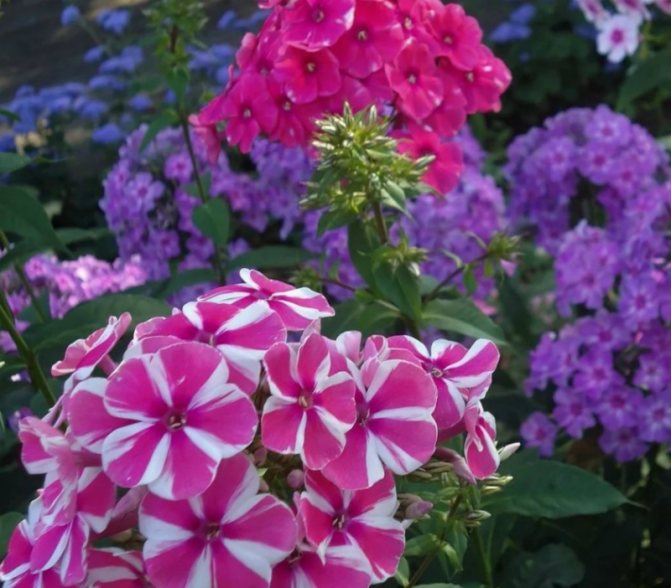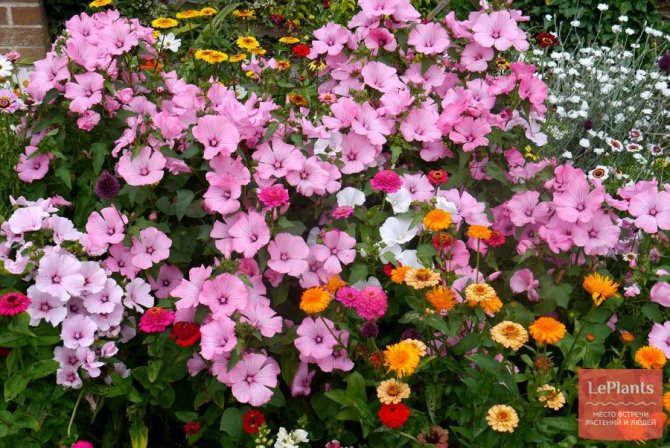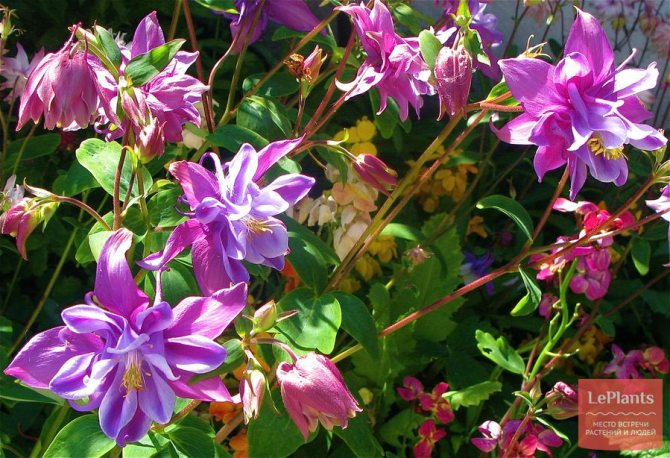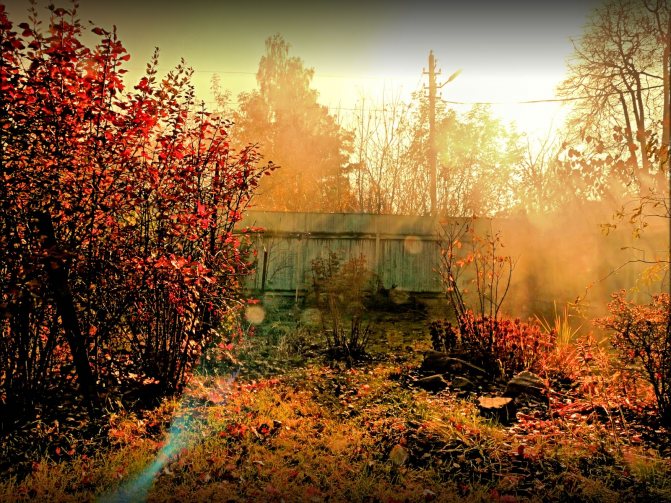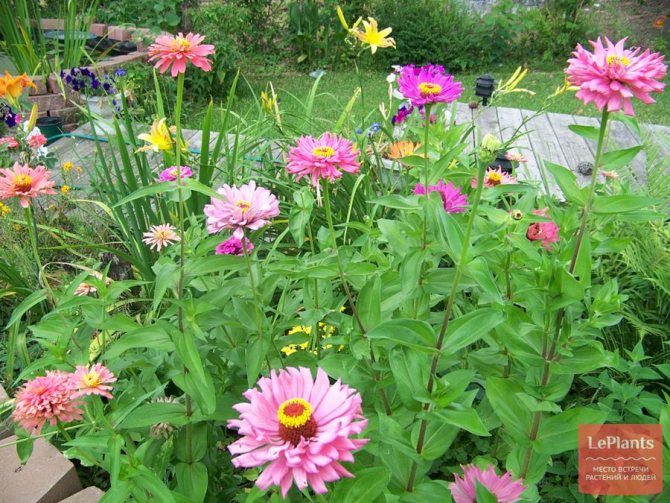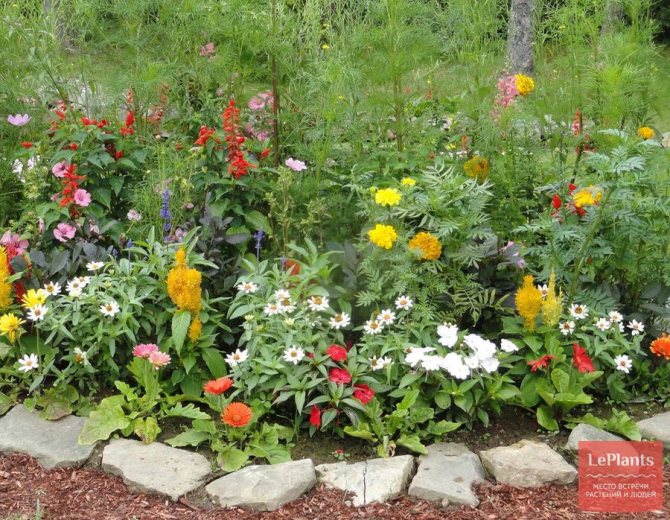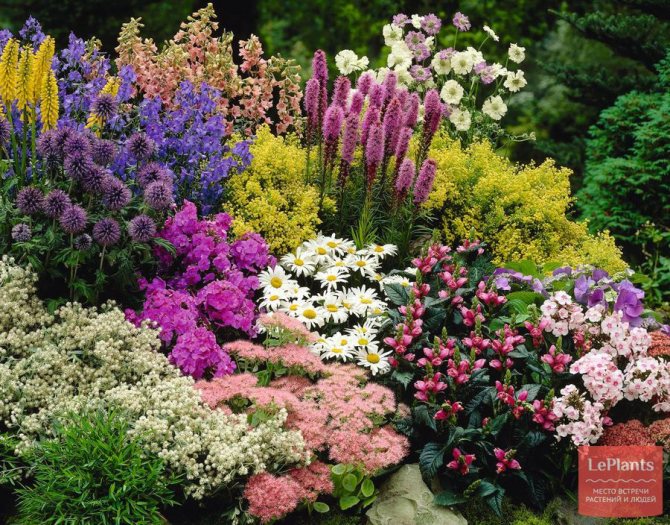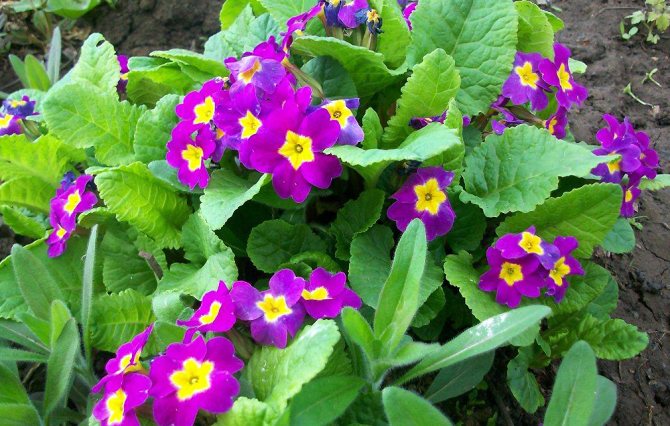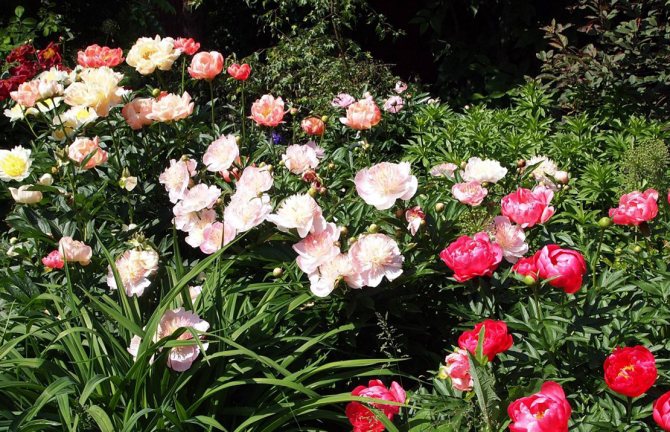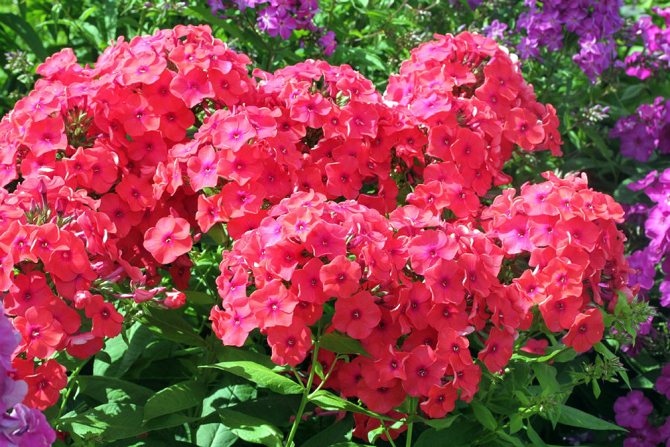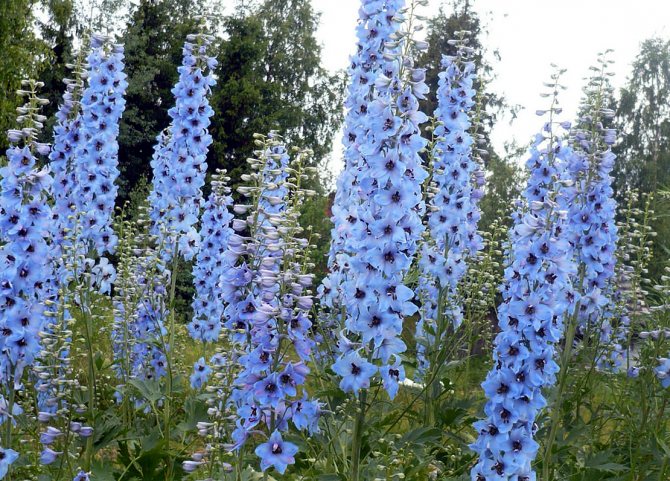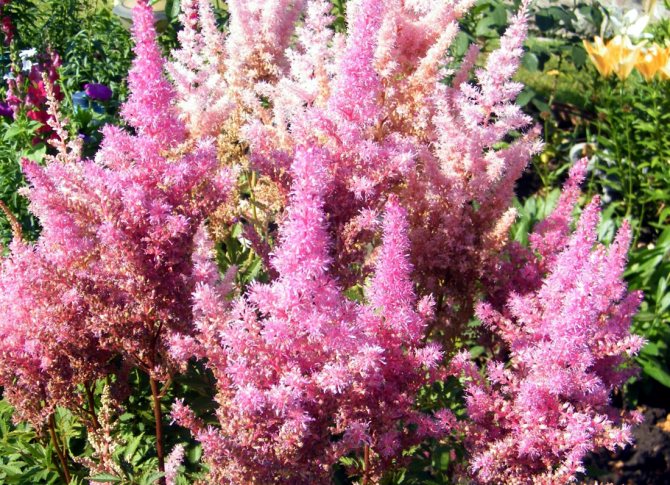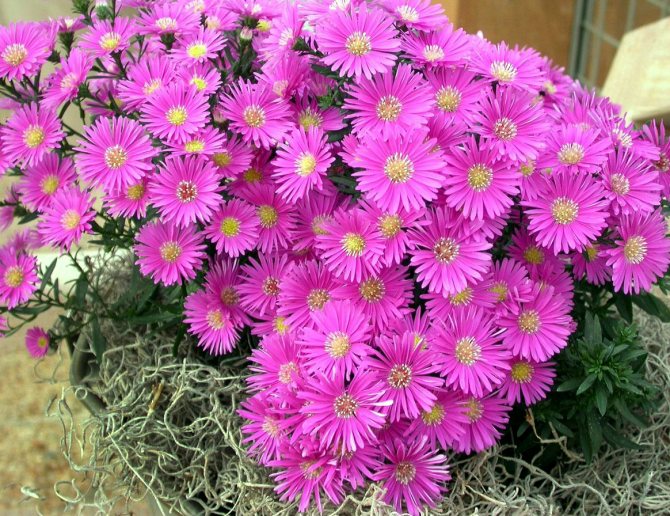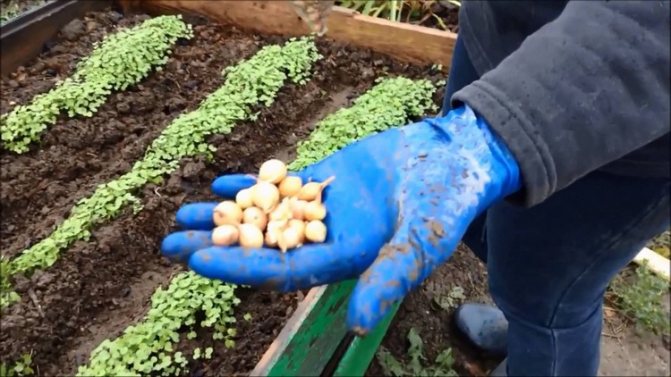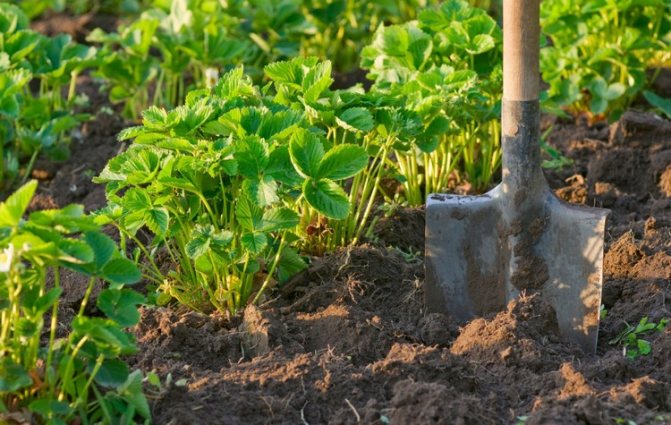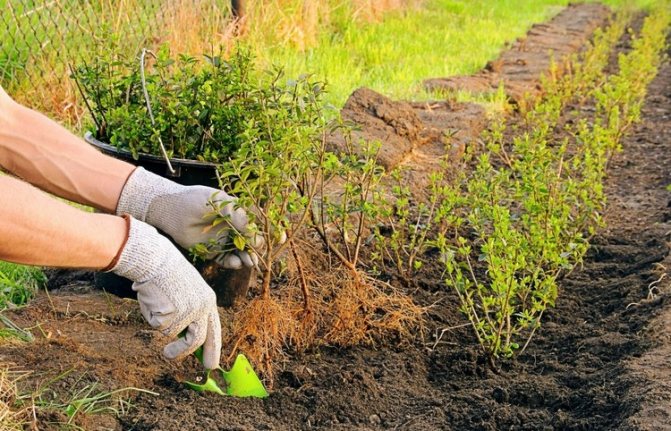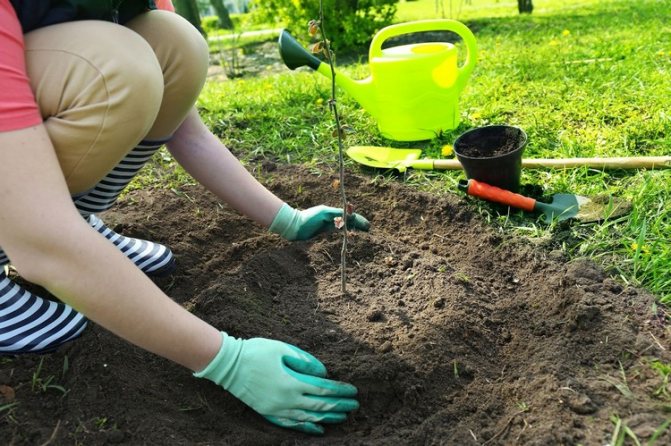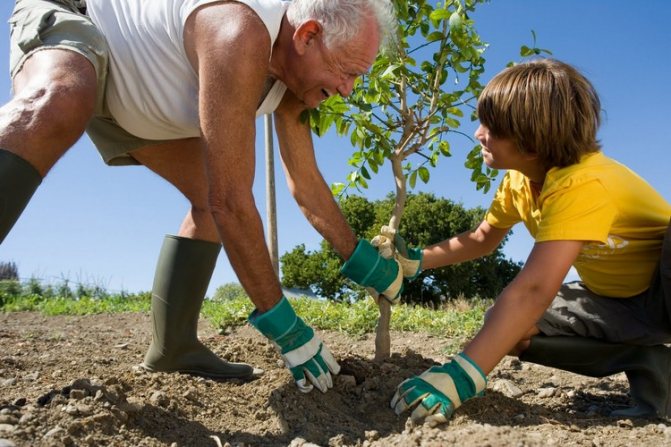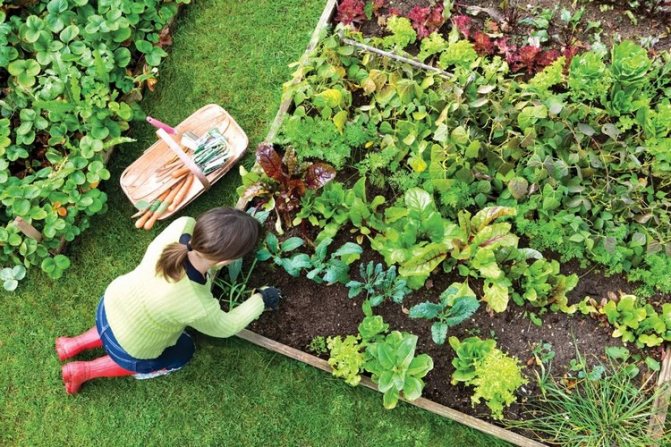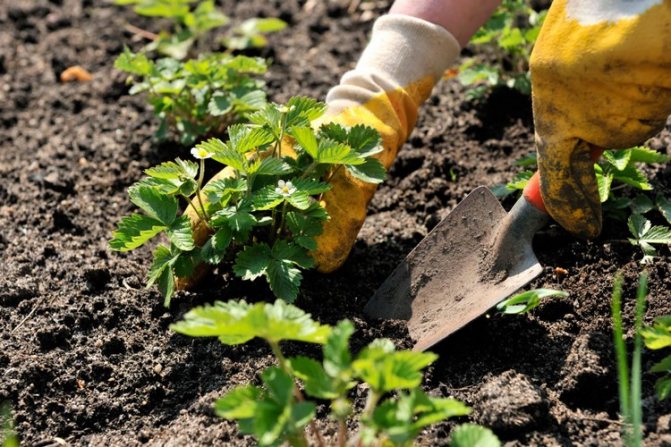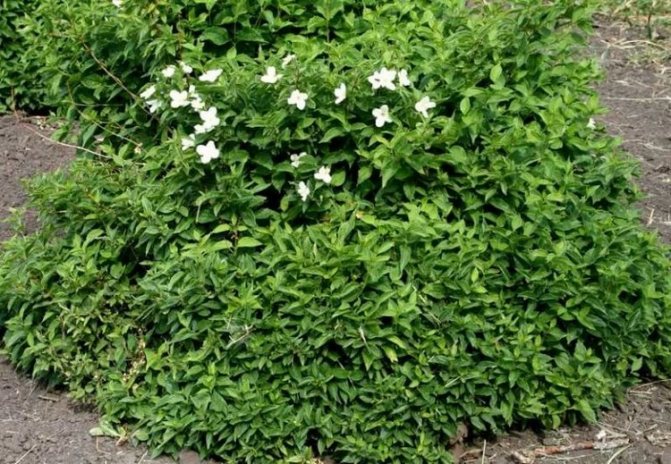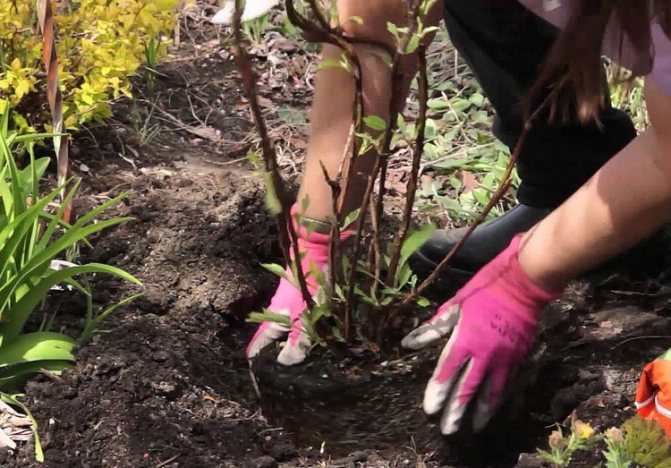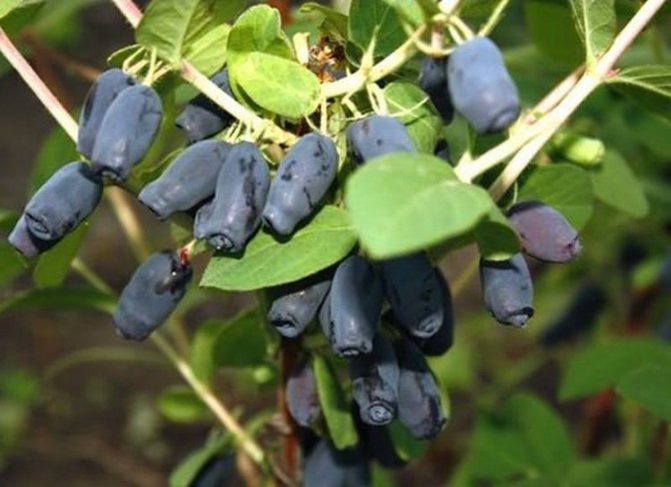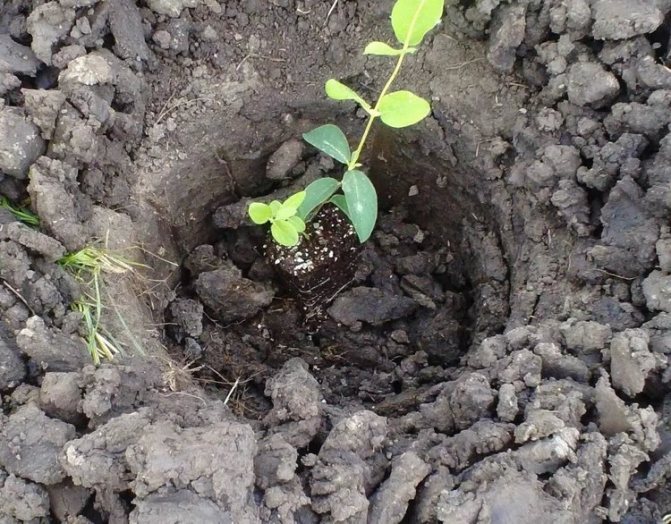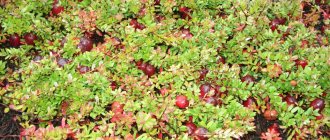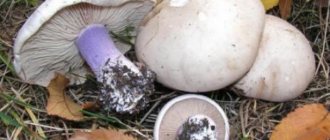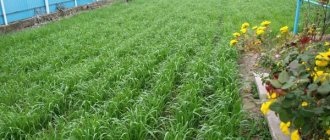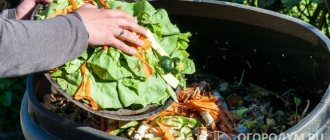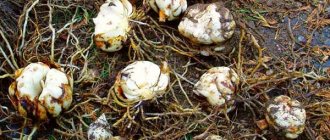Summer residents have work all year round:
- in the spring it is necessary to prepare the soil, plant vegetable and flower seedlings, sow seeds;
- in summer - monitor plantings, water, weed, fertilize, harvest and process crops;
- in the fall - to clear the beds after harvesting summer crops, prepare the soil for planting winter crops, sow them.
Prepare holes for fruit and berry crops, and then plant them and, if possible, control them in winter - to form a snow cover so that they do not freeze.
Can indoor plants be transplanted in the fall?
Houseplants are usually transplanted in February-March or when they begin to grow actively. It is not forbidden to transplant at other times of the year, but the risks and consequences of changing containers and substrate are not the same. One of the most difficult periods for transplanting indoor pets is autumn. A change in lighting and temperatures already affects the condition of the plants, so the autumn transplant is the most dangerous. But you can transplant plants in the fall. True, it is worth doing this only when there really is an urgent need.
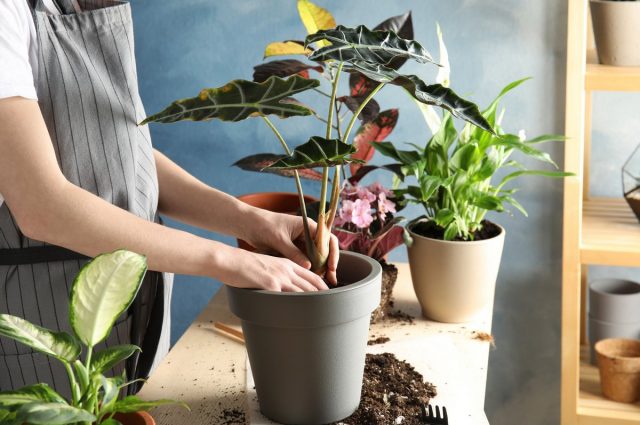
Can indoor plants be transplanted in the fall?
When is it better to transplant perennials?
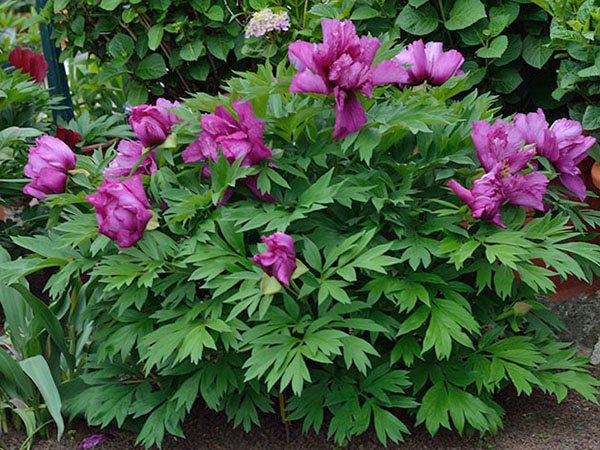

Transplantation and reproduction by dividing rhizomes is carried out in spring or autumn:
- In the first case, the plants tolerate the procedure best of all, carried out from the second half of April to the first days of May.
- For the second time, there is an opportunity to transfer perennials to a new place from August to September.
The choice of this or that option depends on the planted culture. Plants blooming in the second half of summer are best transplanted with the onset of warmth, and, conversely, when buds appear in spring, the transplant is postponed until autumn.
Many flower growers prefer to devote the end of summer and the beginning of autumn to the care of perennials for the simplest and most understandable reason. During this period, they have more free time for such a pleasant, but rather troublesome job.
However, experienced florists associate serious risks with an autumn transplant. If you are a little late, then perennials that have not rooted again before the cold weather in winter may suffer or even die. Therefore, the procedure is always consistent with the long-term weather forecast, taking into account the frost resistance of crops and the climatic characteristics of the region. It is better if during the transplant there will be dry weather with an air temperature of at least 12-15 degrees.
An autumn transplant of indoor plants is always urgent.
Almost always, transplanting indoor plants in the fall is desirable only in one case - if they need an emergency change of the substrate or container. In the fall, if the transplantation and transshipment of indoor plants is carried out, then only when the condition of the plant, the rate of its growth or damage by pests and diseases literally force us to resort to this measure. An exception is bulbous and tuberous forcing or waking up from a dormant period and requiring transplantation before transferring to the heat of the culture.
Emergency transplanting regardless of the time of year is always stressful and the last resort to take in case of plant problems. Before deciding to transplant indoor plants in the fall, you should first assess their condition and try any other available measures.
But you should not be afraid of an autumn transplant. If there is a need for this, it is better to carry out this procedure as quickly as possible, because the affected or weakened plant may not withstand wintering.
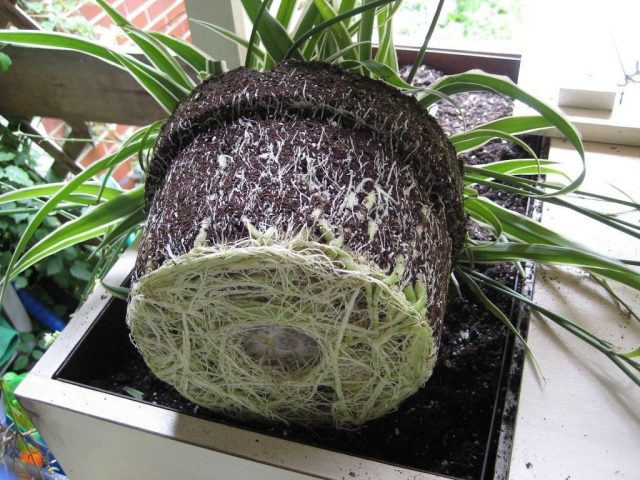

In the fall, plants are necessarily transplanted, which in the physical sense have nowhere to develop.
Perennial transplant frequency
How often perennials are transplanted depends on the type of root system of the plant. Perennial asters and ferns have a creeping root system; it is not recommended to replant them more often than once every 9-10 years. A compact root system - like that of host, peonies and daylilies - gives the plant the opportunity to bloom qualitatively in one place for 11-12 years. Phloxes with a fibrous rhizome need to be transplanted every 4-5 years. Transplants are not shown at all for plants with tap root systems. This process is traumatic for them and often leads to the death of the plant. Such crops are renewed every 5 years by sowing seeds.
You shouldn't start work on a hot day. Postpone transplanting until cool and cloudy. Minimize the time the plant is out of the ground. To do this, start the transplant by preparing a new landing site. On the eve of work, add compost and mineral fertilizers to the soil, dig up, and water the transplanted plant abundantly. Make new holes, taking into account the size of the plant - the roots should not be cramped. Carefully cut through the soil around the flower.
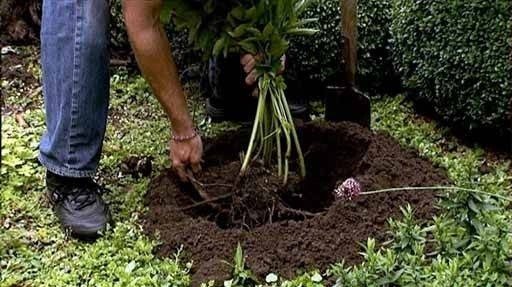

In order not to drop an overgrown plant, ask your relatives for help - by planting a plant in four hands, you will reduce the risk of injuring the flower to a minimum. Be careful not to damage the roots. Shake off the remnants of the soil from the roots, cut off the plant stems with a pruner. This stage is necessary for the transplanted flower to direct all its forces to restore the root system in a new place. Gently separate the roots with your hands, at the same time getting rid of diseased or pest-infested plants. If the rhizomes are very tangled, they can be carefully separated with a sharp knife.
We transplant viable plants into prepared holes, cover them with soil, water abundantly and loosen the soil a little to avoid tamping. This completes the autumn transplantation of perennial flowers.
There is nothing difficult in this process. The main thing is to observe the terms of transplantation and to treat the flowers with care, not to injure them. Then, next spring, the plants will again delight you with abundant flowering, large and bright inflorescences.
When is an autumn transplant needed?
In the fall, the same rules apply to indoor plants as at any other time, but only a serious reason can serve as a reason for changing soil and capacity.
1. Extreme soil depletion or critical loss of its key characteristics... If the soil is too compacted, turned into an impenetrable lump, does not allow water and air to pass through, the plant has not been transplanted for so long that the soil has exhausted all its resources. In all cases, when external signs of depletion or unsuitability of the soil for further plant growth appear, an emergency transplant is needed.
2. Critical overgrowth of pot volumes... In the fall, plants are necessarily transplanted, which in the physical sense have nowhere to develop. If in summer the plant grew rapidly, the rhizome grew so much that it covered the entire earthen lump, and the roots did not just appear, but crawled out of the drainage containers and / or the top of the substrate, the earthen lump is so filled with roots that even water does not penetrate into it - urgently transplant!
3. Souring, moldy and salinization of the soil... The easiest way to determine this problem is the appearance of the soil (salt crystals accumulate on the surface and walls of containers) and smell, because the affected soil exudes a specific sour or mushroom aroma. But the first sign is a sickly, withering plant.Salting causes the wrong composition of water and irrigation with unsettled water. But only improper, excessive watering and stagnation of water in pots and pallets leads to acidification and the spread of mold, including as a result of the absence or improper selection of drainage and the depth of the containers.
4. Wrong selection of soil for acidity... If for plants growing only in weakly acidic and acidic substrates, soil with an alkaline reaction was used (and vice versa), as a rule, by the fall, the consequences of a mistake in the selection of soil will become obvious and inevitable.
5. Infection of the soil with pests, including nematodes, or severe damage to plants by fungal diseases, the causative agents of which could remain in the substrate... If any pests living in the soil are affected, especially when it comes to plants of a group of tuber-bulbous species, waiting for fungicides to help cope with the problem is most often useless. You cannot do without a transplant with a complete replacement of soils and thorough disinfection of the roots. It will also be necessary to change the substrate with all possible preventive measures for plants that have a risk of re-infection due to damage not only to the aerial parts, but also to the soil by viruses and diseases. Such a transplant is carried out only after the plant is cured of the disease, before being transferred from quarantine.
6. Buying a plant in a substrate in poor condition. This includes buying tubs transported in clean, inert soil, buying plants in spontaneous markets that grow in dense garden soil, or ordering imported plants that require a substrate replacement as directed by the supplier. Such a transplant should be postponed until the end of the quarantine period. If the plant simply grew in peat or growth in inert soil can be compensated for with top dressing, it is always best to postpone the procedure until spring and the optimal timing.
FEATURES OF PERMANENT FLOWERS TRANSLATION
Having planted some beautiful lushly blooming perennial flower, you admire its wondrous beauty every year. But after some time, you notice that its flowers become smaller, and their number sharply decreases.
Bushes begin to grow at the edges, and thin out in the center. This suggests that the plant needs to be rejuvenated and planted to make it look fresh and beautiful again.
The fact is that a few years after planting, the perennial root system begins to grow rapidly in all directions, including upward. Individual roots emerge to the surface of the ground, concentrating in the center of a bush or curtain.
The nutrition of the whole plant is disrupted. Dead parts interfere with the development of young shoots, and they tend to "leave" in different directions. This suggests that it is urgent to divide the bush and transplant its individual parts to another place.
However, here, too, one cannot overdo it, because not all perennials need a transplant. For example - plants with tap roots (aquilegia, spurge, lupine, bell, poppy other). They tolerate division very poorly. They are propagated by seeds, layering or cuttings.
Also try not to divide rudbeckia and carnation... They reproduce well by cuttings.
Determining whether a given plant needs rejuvenation is very simple. Look at the center of the bush. If he is decently bald, then the old roots are no longer working, and it's time to plant new side shoots.
Usually, the division of perennial flowers is carried out every five years. But you should not immediately "ruin" the entire blooming flower bed. It is enough to carry out this operation every year for three to four plants. Then it will not violate the decorativeness of your flower garden.
The division of perennial flowers is carried out either in the spring, before they have green leaves, or in August-early September, when the plants still have time to take root well and prepare for winter.
In the spring, the division of plants is carried out, the flowering of which ends in the fall, when they simply do not have time to take root in a new place. At the end of summer, those that bloom early are planted.
The most common perennial flowers that are planted and planted from mid-August to mid-September: astilbe, brunner, herbaceous peony, phlox, irises, delphinium, lupine, hosta, clematis.
All these plants tolerate transplanting very well and are not afraid of severe frosts. By the way, plants planted before winter have increased immunity to all fungal and infectious diseases!
They seem to undergo natural stratification and grow faster and begin to bloom in spring.
The timing of dividing and transplanting perennial flowers, as a rule, coincides with the timing of planting new varieties of this species.


When is an autumn transplant definitely going to get in the way?
In autumn, even with plant health problems (with the exception of serious disease or pest damage), signs of lack of space in the pot or growth problems, it is not always possible to carry out an emergency transplant.
Even with "indications" for a transplant, it is worth abandoning it in the fall:
- for plants that are going through the budding or flowering stage;
- for crops in a highly weakened state (for other reasons not related to the soil);
- with a sharp change in temperature or in extremely unstable temperatures;
- at the very beginning of the period of operation of heating systems (plants need to be given time to adapt to the new environment).
Features of autumn transplantation of indoor plants
Only when the volume of the pot is outgrowing and when plants are purchased in inert soil in autumn, transshipment is permissible, but even then not quite classical: the roots that have formed dense rings at the bottom of the container, as well as a too compacted waterproof lump, will have to be at least stirred up.
When the soil is depleted, it makes no sense to leave the spoiled substrate, and when salting, acidifying, contaminating, the complete release of the roots from the old soil with inspection, pruning and processing of the roots is a mandatory measure.
Before proceeding with the transplant, you should make sure that you are well prepared for this procedure:
- prepare containers in which plants are transplanted in the fall: they should ideally fit them in volume. Even with a very noticeable outgrowth of the old pot, it is impossible to greatly increase its volume, adhering to the standard recommendations for the ratio of height and width;
- make sure there are quality drainage holes and disinfect drainage materials at the bottom;
- check the requirements of a specific plant species;
- select the substrate and its composition individually, carry out processing (any soil in the fall, especially if an infected plant is transplanted into it, it is better to disinfect);
- prepare tools, containers and all preparations that will be needed for processing plants;
- prepare two workplaces - one for removing old soil, the other for planting in a clean substrate.
Site preparation for planting perennial flowers
To admire the beautiful flower beds before winter or in spring, do the preparatory work:
- remove dry leaves, weeds on the site;
- add compost and complex mineral fertilizer;
- dig up flower beds that have completely decided to update and plant perennial flowers;
- prepare seeds, bushes and cuttings for planting (transplanting).
The conditions in which the delicate roots of plants will germinate depend on the condition of the soil. The earth should be dug to a depth of about 30 cm. The prepared flower garden is allowed to "rest" for 10 days, so that the fertilizers have time to dissolve, and the soil has settled a little and compacted.
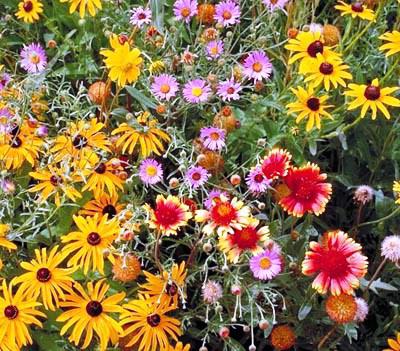

Traditionally, flower growers plant bulbous, asteraceae in the fall. But there are many more opportunities to create beautiful compositions in flower beds.Let's find out what perennial flowers can be planted in the fall in a flower bed so that it does not lose its decorative appearance for a long time.
What to do with houseplants in autumn
Adding an article to a new collection
You are wondering: what kind of care do your indoor plants need in the fall and what needs to be done in order for them to survive the winter well? We list all the “flower” procedures in September, October and November.
Autumn has come, it’s not as warm outside the window as it was just a few days ago, and it’s time to complete all gardening and gardening work before winter rest. However, together with you, your green pets from the windowsill, shelves and other places of the apartment will enter the phase of forced rest. What can and should be done with indoor flowers at this time?
Transfer indoor flowers from the street to the house
There are a lot of indoor flowers that feel great outdoors with the onset of warmth in spring and until the first cold weather. These include, for example, ficuses, monstera, primroses, myrtle, palm and many other plants. They are resistant to temperature extremes in the warm season, however, they are unlikely to endure winter in the middle lane in the open air, as well as on a balcony or terrace. Therefore, as it gets colder, depending on the resistance of indoor plants, they need to be transferred to a warm room.
Treat the plants with insecticides a few days before returning them to their place indoors. And after two or three for after transfer, spray the leaves with green soap or soapy water solution and rinse under the shower. These procedures will protect your plantings from diseases and pests.
When the temperature starts to drop below 10 ° C at night, bring ficus, fuchsia, anthurium, hibiscus and philodendron into the house. Kalanchoe, euphorbia, oleander and crassula can hold out a little longer on the balcony or terrace, but at night temperatures below 7 ° C it will be better for them to return to the windowsill.
To return indoor flowers to a house or apartment, choose a cloudy day so that the change in plant conditions does not become stress for them.
Flowers that can be planted in the fall: names and descriptions
There are many perennials (and biennials) that you can successfully plant in the fall and enjoy their beauty in subsequent seasons. With their help, you can ennoble the territory of the garden, bring brightness and festivity.
Perennials for planting in autumn
Many perennials are planted with seeds and by dividing the bush. Below you can explore the most interesting and beautiful specimens.
Primrose
There are over 500 species of beautiful primrose. Flowering takes place at different times depending on the species, but, as a rule, this flower is considered spring blooming.
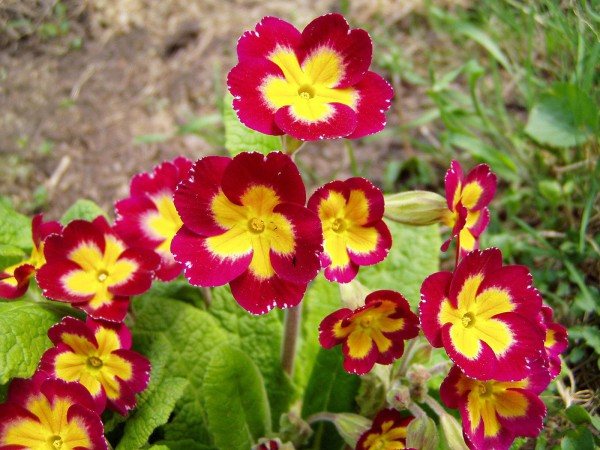

The optimal arrangement of a flower bed with primroses is in partial shade, which comes from trees, bushes. The soil should be fertile and moist. The recommended time for planting a flower in the fall in the garden or in the country is the end of September.
Advice! All detailed information about planting primrose you can find on that website.
Heuchera
Heuchera is an amazing plant that can change the color of its leaves during the growing season. Interesting shades and their combination on the leaves will catch the eye of even the most sophisticated gardeners. Geuchera is often used when creating flower beds near the house, alpine hills, stone beds.
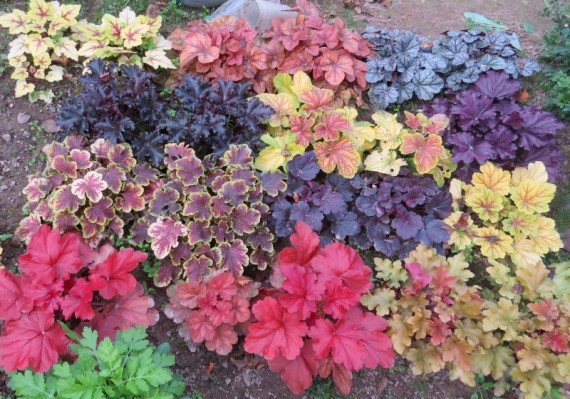

Heuchers are suitable for light nutritious soils with permeable properties. Do not choose areas where moisture stagnates.
As for the growing area, here the opinions of experienced gardeners differ: some argue that it is best to root in a sunny place, others say that a shaded garden is more suitable. Therefore, you can choose a place with partial shade or with good illumination and protection from wind and cold.
It is optimal to transplant Heuchera in the autumn after flowering.Delenki should be covered with mulch in order to protect from cold weather.
Herbaceous peony
Many gardeners love the beautiful and unpretentious herbaceous peony that blooms in spring. For rooting, it is worth choosing sunny, well-lit areas. But it is also important that shrubs or small trees are located nearby, which can protect the peony from the weather. Avoid low-lying areas where moisture stagnates.
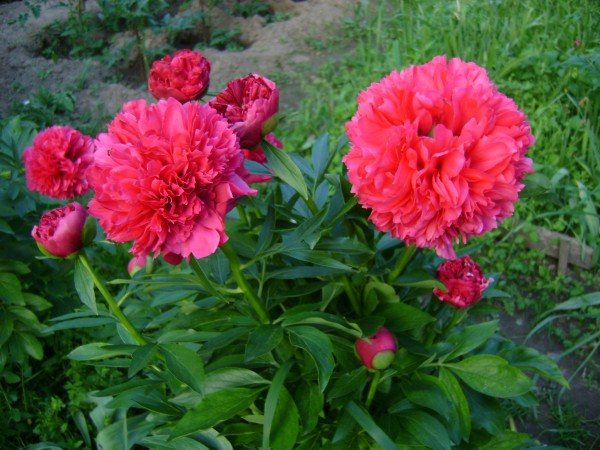

Suitable dates for the event are late August-early September (but if the season is warm, then you can carry out the procedure before the end of September).
Important! For more information on planting peonies, you can study in this article.
Rudbeckia
Sunny areas are suitable for rudbeckia. It is not recommended to grow it on one bed for more than five years, so after this period it is better to transplant it. It is optimal to do this in the second half of September after flowering. But sowing seeds is best done in the spring.
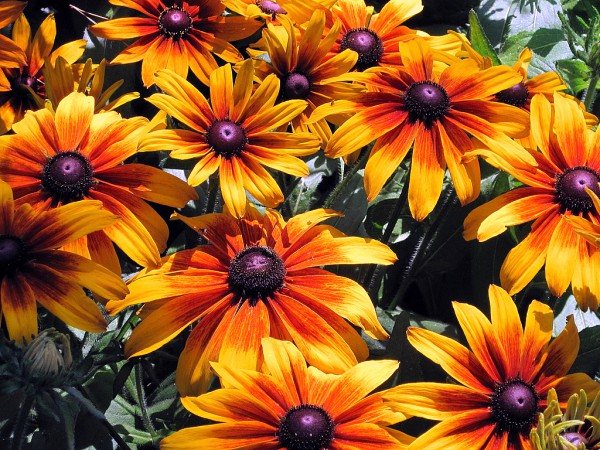

Phlox
Excellent summer flowering perennials. The place for planting them should be sunny, with moist soil, it is desirable that it also be loose and fertile.
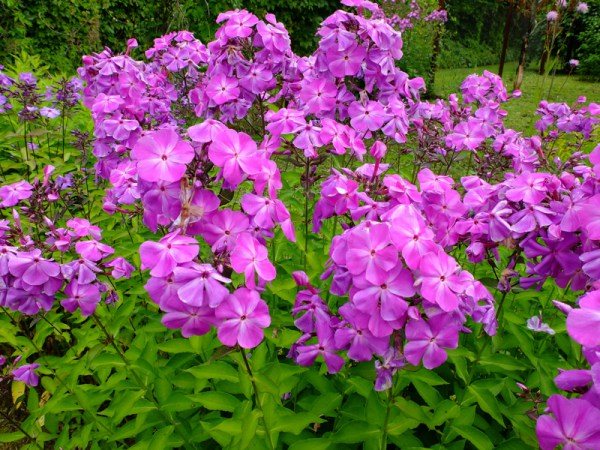

You can plant and transplant phloxes in September-October. But if you did it too late, then you need to mulch the garden after the event. For details on sowing phlox seeds, see this article.
Hosts
Hosta is a shade-loving plant, which is called the "queen of the shade", so it must be planted in a shady area.
By the way! About others shade-loving and shade-tolerant plants you can read in this material.
The host also loves moisture, but excess moisture still needs to be eliminated. It looks very beautiful both during flowering and after (thanks to the magnificent leaves).
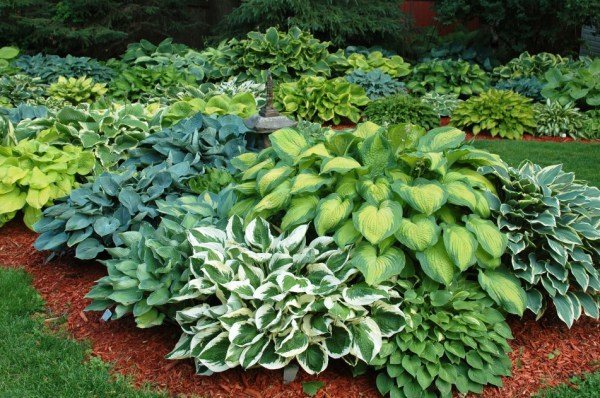

It is better to replant hosts on a cloudy day. This must be done no later than a month before frost.
Delphinium
The color of the delphinium is very diverse and can vary from pale pink to bright blue. In the southern regions of the country, it blooms in May-June and blooms again in the fall. As for central Russia, flowering occurs in the summer - mid-June and lasts until the end of July. It can resume, provided that the peduncles are cut after the first flowering.
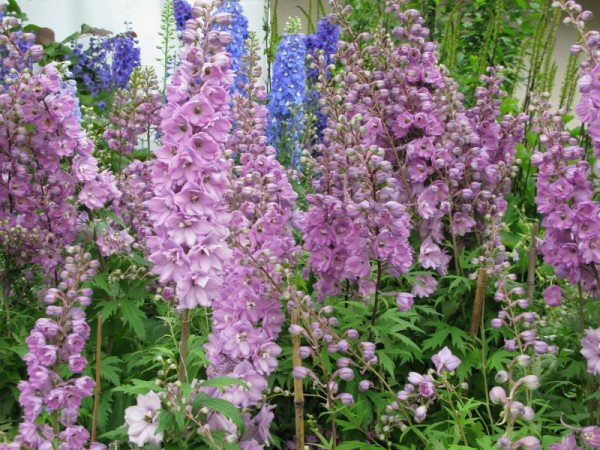

The 1st half of September is the optimal period in the fall when you can plant or transplant a flower into open ground. For planting, it is better to choose a sunny, spacious place. The soil must be fertile. By the way, if it is sandy or clay, then it is recommended to thoroughly fertilize it. Before the autumn planting or transplanting, it is necessary to dig up the soil and apply organic fertilizers.
Interesting! Also read how to plant a delphinium for seedlings in this material.
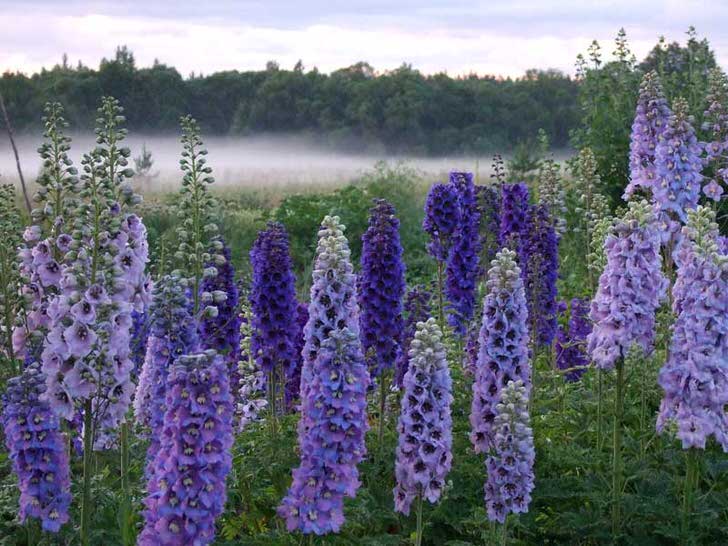

Echinacea
Echinacea pleases with flowering from July to September. But for successful cultivation and lush color, you need to root the echinacea in a sunny location. Do not place echinacea too close to other plants.
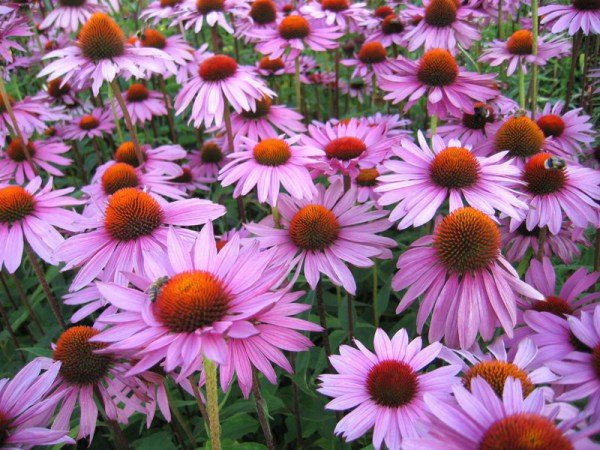

Planting by transshipment can be carried out until late autumn. But from the seeds, seedlings should first be grown in the winter.
Astilba
A wonderful, unpretentious perennial. At the same time, gentle and bright astilbe can decorate any area. Astilba color can be pink, white, purple, red. Summer blooms vary from June to August.
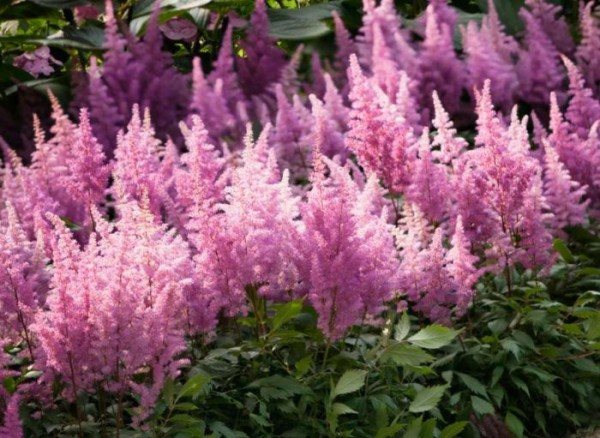

The best time to plant a flower in autumn is early September. If you plant astilba at a later date, it is imperative to mulch and cover it before winter.
Before the event, soil digging, weed removal, as well as feeding with rotted manure are carried out. But after planting, it is necessary to mulch astilba, for this you can use sawdust, straw.
Important! detailed information about planting astilba waiting for you in this material.
Woolly chisel
Woolly chisel is also called "sheep's ears" because of the large, shaggy leaves.It is because of their beauty that the chastetz became popular among summer residents and gardeners. It blooms from June to September, but the flowering is inconspicuous, it is loved for its foliage.
Transplant indoor plants into larger pots
Basically, it is customary to transplant indoor flowers in the spring, but early autumn is also great for this, since most plants go into a state of forced dormancy not earlier than October, which means that they will still have time to adapt to life in new containers.
Before replanting a flower after removing it from the pot, carefully examine the roots: if everything is in order with them, then the plant can be transplanted together with a lump of earth, i.e. cross over. If the roots have rotted or, conversely, dried areas have appeared on them, then all their damaged parts must be removed and the cut points must be disinfected with crushed activated carbon.
For transplanting and handling plants, choose a pot with a diameter of 2-3 cm larger than the previous one. Treat all pots, pots and flowerpots well with green soap and rinse with water.
Indoor plants are not recommended to be transplanted during their flowering, since they can not only shed their buds and no longer bloom, but die altogether. However, if such a need nevertheless arose and you have no other way out, use not a transplant for a flowering plant, but a transshipment, moving it to a new pot along with a lump of earth. The day before and 10 days after transplanting, treat the plant with a growth regulator that has a strong anti-stress effect. This is, for example, Epin Extra.
By the way, if during the transplant you did not have the opportunity to use gloves and you stained not only your hands, but also your nails with earth, then there are several quick and effective ways to clean them.
HOW TO DIVIDE LONG-TERM FLOWERS
It is best to carry out this operation in cloudy weather. The day before transplanting, the bushes need to be watered well so that they experience less stress.
Planting holes filled with fertilizers should already be prepared. They can be made in new flower beds, or you can expand the old flower garden by adding potassium-phosphorus fertilizers and ash to the nutrient soil (nitrogen fertilizers are no longer applied in August so as not to provoke active growth of green mass).
Then they begin to dig up the planted plants. The main thing is not to damage the overgrown roots. The perennial bush is carefully dug in from all sides and carefully removed from the ground.
Then the roots are well shaken off, all dead and rotten ones are removed and with a sharp pruner or shovel (large bushes) they divide the bush into several parts (from 3 to 5, depending on the size of the root system). To get strong plants, the division should be fine. But then it will bloom only in two years.
Before dividing, disassemble the roots with your hands, marking the places where you will cut. Remember that every new plant must have at least three stems. Before planting, prune the roots lightly and dip them in a weak solution of potassium permanganate to prevent infection.
Then proceed to planting in a permanent place. Water the planted plants well, and mulch the ground around them with straw or freshly cut grass.
If the weather is hot, shade young bushes with paper, an old sheet or non-woven covering material.
Planting new plants is carried out in the same way. It is important to complete this operation before September 20, and in the northern regions - before September 7-10. It is already risky to do this later, since early cold weather can destroy young plants.


Treat plants from diseases and pests
Preventive treatment of indoor plants with insecticides against diseases and pests must be carried out without fail, even if you have not been transplanting.The reason is that whiteflies, aphids, ticks, as well as causative agents of various diseases that plants can get sick with against the background of changing conditions of their keeping, often get into the house from the street on the leaves of flowers.
As a rule, information on the dose and frequency of prophylactic treatment is in the instructions for the corresponding drug. If you are spraying a flowering plant, make sure that the spray does not get on the flowers. When foliar feeding, be sure to work with gloves.
Remember that diseases and pests are active not only in the warm season, but also in winter. For this reason, you need to regularly inspect the leaves and stems for the presence of appropriate manifestations on them.
What flowers to sow in autumn
Many garden flowers reproduce by seeds that require stratification - they need to lie in the cold at sub-zero temperatures (or close to zero), we often buy seeds in the spring and keep them in the refrigerator for 2-3 months. But you can sow the same seeds (purchased or collected from your flowers) before winter.
In terms of timing, it is important to guess with the weather so that stable frosts are established, otherwise some of the seeds may germinate, but weak shoots will die by winter.
Before winter, we sow flowers such as: alyssum, aquilegia, asters, buzulnik, cornflowers, heuchera, godetia, gypsophila, Kutai carnation, delphinium, decorative onions, dimorphoteku, iberis, calendula, clarkia, cosmea, kochia, bathers, lavana, lava snapdragon, mallow, poppy, hellebore, marin root, seed nigella, primrose, peonies, pyrethrum, podophyllum, rudbeckia, bluehead, fragrant tobacco, phytolacca, phlox, chrysmantema, escholzia, echinacea, etc.
Reduce watering, spraying and feeding
Since the flowers are preparing for the dormant period and their metabolic processes slow down, they no longer require as much moisture and nutrients as in the warm season. Therefore, watering should be reduced from heavy to moderate, and in some cases to sparse.
Watering is considered abundant, in which the soil constantly remains moist, but at the same time the water in the pot does not stagnate, moderate - when only a small part of the topsoil has time to dry out between waterings. Rare watering is considered to be the content of the plant in dry soil with the introduction of moisture into it only during the growth period.
For the same reason, spraying of indoor plants is also reduced: this is done when the air in the room is dry or the heating system is near the place where the flowers stand. In this case, once a week, it is useful to spray them with settled water at room temperature.
The last feeding of indoor plants is carried out at the end of September, and the flowers are not fertilized until the beginning of the next season in spring.
Features of transplanting plants with different bark systems
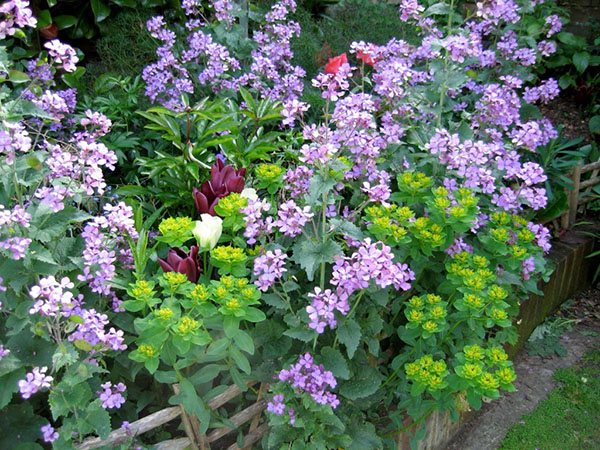

Perennial plants with a shallow root system or with fibrous roots that do not go deep underground are easy to dig up and transplant. Even the loss of some part in this case will not harm, because this is how the multiplication of culture takes place. The above fully applies to violets, pyrethrum and sycamore, rudbeckia and echinacea, numerous species of ornamental and spicy plants belonging to the lucifer family, for example, monarda, oregano, lofant, lemon balm and mint.
It is best to transplant such plants in the fall, when they are clearly visible, and the dried aerial part can be cut off without regret, damaged or rotten rhizomes removed. Large clumps are divided so that the resulting parts take root after planting and give new shoots.
Do the same with irises, peonies, lilies of the valley, and badan. The roots of these plants are outwardly different in appearance, but in the presence of potential points of growth, the cuttings soon give rise to independent sprouts.
Cut flowers and plant bulbous plants for distillation
In theory, it is permissible to cut herbaceous plants by cuttings all year round, but experienced florists do not advise doing this in winter due to the same state of dormancy. In early autumn, you can try to cut plants such as tradescantia, pelargonium, begonia, saintpaulia and some others.
In addition, some plants, such as bulbs, can participate in winter forcing. Therefore, if you have bulbs of hyacinths, crocuses or daffodils in your house, you may well plant them before winter in order to wait for their gorgeous flowering just in time for March 8th.
Benefits of planting flowers in the fall
Experienced gardeners and summer residents advise without hesitation to plant perennial flowers in the autumn. And they are absolutely right, there are a number of reasons for this:
- In winter, the planting material encounters natural stratification, which allows the seedlings to withstand the effects of the sudden return of spring cold weather.
- Thanks to the same natural stratification, plants begin to bloom several weeks earlier than those that were sown in spring.
- Flowers that are planted in autumn have strong immunity, due to which they resist various diseases and pests.
- If planted before winter, then in winter you can not waste time growing seedlings.
Install an artificial color lighting system
As you know, in winter, some flowers lack lighting due to the reduction in daylight hours. This mainly applies to orchids and succulents. To replenish the light, they need to provide artificial lighting with a special lamp. The plant should be located at such a distance from the lamp that it does not feel discomfort and at the same time receives all the missing volume of lighting. Also, the lamp must be periodically wiped as dust settles on it.
And what kind of work related to indoor flowers do you carry out in the fall and which of the following have already been done?
When do indoor flowers need a transplant?
The frequency of transplanting different flowers differs depending on the species and variety. A young plant, rapidly gaining green and root mass, is annually placed in a larger pot with new soil.
The growth of a flower at the age of 3-4 years is significantly reduced, which means that the frequency of its transplants also decreases. It should be borne in mind that this procedure is stressful for the plant, therefore, it should be carried out only in certain cases.
The reason for the transplant may be:
- yellowing of foliage;
- small size of new leaves;
- slowing down or stopping the growth of the ground part;
- poor flowering or lack thereof;
- roots sticking out of the drainage holes;
- the smell of swamp rot or the rapid drying of the soil;
- the presence of white bloom on the upper soil layer;
- the appearance of parasites and pests in the soil.
The best time to transplant a plant
The procedure is planned and emergency. Experienced flower growers observe the following rules:
- Flowers are transplanted in the spring, when the growing season begins. At this time, the plant, having gained strength, wakes up after hibernation, its active growth begins. Such a flower tolerates stress much easier, quickly recovers and adapts to new conditions. In addition, when placed in a fresh fertilized soil mixture, it receives a large portion of energy for full growth and flowering.
- In early autumn, transshipment of the plant is allowed if its root system has grown too much over the summer. Also at this time, indoor specimens are planted in pots, which were placed in the front garden for the summer.
- In winter, the plant, weakened after flowering, goes into a sleep phase. All processes slow down in it, recovery takes place. A transplant can be detrimental to his condition, and adaptation will take too long. During this time, diseases may develop or pests may start.
- An emergency transplant is carried out only if there is an urgent need to replace the soil or if the pot has broken.
When not to conduct?
Restoring a plant after transplanting requires energy and the creation of favorable climatic conditions. You should refrain from the procedure in the following situations:
- the flower was just bought. They do not touch it, leave it for 15-20 days in a transport container for adaptation;
- a specimen diseased or attacked by pests. The plant requires prior treatment. Otherwise, an already weakened plant may not survive the additional load;
- during flowering. During this period, all forces are spent on the development of ovaries, flowers, seeds or fruits. A transplant can completely exhaust the pet and lead to his death;
- in the resting phase (autumn-winter). All processes slow down, which will prevent the flower from recovering after the procedure.
Better in summer?
During this period, it is better to do transshipment. Being in the peak of the growing season, the flower can prepare for flowering, which requires a lot of energy. The transfer is less painful and easier to bear.
Perennials that are planted in early September
In the first ten days of September, up to a maximum of the middle of the month, hostas are planted, transplanted, propagated by dividing the bushes - perennial herbaceous plants. This genus has about 40 species. It takes about a month for a flower to fully root, so its later planting is undesirable.
At the same time, the planting or transplanting of roses, which began at the end of August, is finished - deciduous shrubs with a height of 0.3 to 2.5 m or branched vines reaching 10 m in length. Flowers have a variety of colors. The pink family has from 300 to 400 species. They come from rose hips or the Gallic rose. The current varieties have been bred by crossing and selection work.
Autumn planting of roses is preferred in the southern regions, where the plants have enough time for rooting before the first cold weather. In northern areas, spring planting is desirable, and autumn planting is considered risky.
Bulbous flowers
With the onset of autumn, the time comes when bulbous perennials are planted so that they have time to settle down in a new place, and in spring, as soon as the weather permits, they can start growing.
First third of September
This is the best time to plant small-bulb flowers. These include:
- Proleska, or scilla, is an unpretentious bulbous plant that needs to be planted once. The blue carpet of these early spring flowers will grow annually as they are self-seeding.
- Muscari, or mouse hyacinth, is more than 60 species of small-bulbous flowering plants of the asparagus family. This is one of the first flowers to bloom in spring. They have a pleasant and strong smell.
- The genus Chionodox includes 6 species of flowering plants, which are among the first to bloom in the spring. Their leaves are 8 to 12 cm long, and their peduncles are up to 20 cm. The buds can be blue, white, blue and pink. By June, the entire aerial part of the plant dies off.
Second decade of September
During this period, unfinished planting of plants recommended for planting in the first decade is continued, and also crocus, daffodil and then hyacinth bulbs are planted first.
Crocuses (saffron) are popular herbaceous corms of the iris family. 80 of their species and 300 varieties are described. Even in Egyptian papyri, there is a mention of crocus. Few know that among them there are primroses that bloom in spring, and species of this plant that bloom in autumn. Spring flowering crocuses are planted in September.
Daffodils are flowers that are considered a symbol of full-fledged spring. There are about 60 species of them. Flowers are undemanding to the soil, hygrophilous, prefer to grow in the sun or in partial shade.
Hyacinths can be propagated by seeds, but the seedlings will bloom only after 5 or even 7 years, and they will not repeat the external signs of their parents. In horticulture, these flowers are propagated by babies, which can be easily separated from the mother's bulb. They are grown in cold greenhouses for 2 years. If it is still not easy to separate the children from the maternal modified shoot, then they are planted together with the bulb.
Third decade of September
The end of September is the time for planting tulips.
Tulips are bulbous perennials of the lily family. Their variety from white to almost black is a symbol of the triumph of spring in nature. Planted in time in the ground (not less than a month before the onset of cold weather), the bulbs of this plant will root perfectly and will give spectacular flowers in the spring. They are planted at a distance of about 30 cm from each other, and children - after about 10-15 cm.
The general rule for planting almost all bulbous perennials is that the depth of planting the bulb in the soil should be approximately equal to three times the height of the bulb itself.
Table: other perennial flowers, which begin to be planted in September
I have long been growing perennial rudbeckia Golden Ball. The plant is completely unpretentious, it would only be watered on time. She is not sick, is not afraid of pests. Its stems are up to 2 m tall, with large green leaves, and then with bright yellow flowers, perfectly decorate a mesh fence. Unfortunately, I don't have my own photo, but I found a very similar option on the net.
When planting a cut of rhizome plants, one should not forget to treat all sections with charcoal or ash to prevent decay and infection.
Photo gallery: perennials that are planted in September
Let's turn to the lunar calendar
It has been proven that the location of the moon affects the rate of flow of fluids in living organisms. Flowers are no exception. Depending on the lunar phase, it is possible to complicate or facilitate the recovery of the transplanted plant.
What impact does it have?
Depending on the lunar phase, the sap flow of all plants changes. To carry out any manipulations with flowers, gardeners are guided by the following rules of the four phases of the moon:
- The waxing moon is the period between the new moon and the full moon, causing an ascending sap flow. At this time, the liquid moves from the roots to the ground part. The stem, leaves, buds and flowers are energized and grown.
- Full moon - a period consisting of the full moon itself plus one day before and after it. The terrestrial part is the richest in the energy accumulated during the growing moon. Damage to the roots will practically not affect the condition of the flower, since all the juices are in its upper part.
- The waning moon is the time from full moon to new moon. Juices rapidly move down to the roots, gradually weakening its ground part. During this period, it is undesirable to damage the root system.
New Moon - the period when all the energy of the plant has accumulated in the roots. The ground part is weakened. Damage to the root system can seriously damage the entire flower. The period consists of the new moon itself plus one day before and after it.
Can you transplant when the moon is waning?
During this period, the bulk of the juices and energy accumulates in the roots. Transplanting a flower without damaging the roots is unlikely to work. This negatively affects the health and recovery of the plant after suffering stress. If possible, postpone the procedure until the end of the new moon.
Which days of the week or day to prefer?
Florists who orient on the phases of the moon use the lunar calendar compiled annually. In 2020, favorable days for transplantation are:
- in August - 3-8, 10-12, 16, 18, 21, 22, 27, 31;
- in September - 1-6, 8, 9, 13, 14, 18, 19, 22-24, 29, 30;
- in October - 1-5, 10, 11, 15-17, 21, 29-31;
- in November - 1-3, 6-8, 11-13, 17, 20, 27-30;
- in December - 3-5, 8-13, 17, 19, 23, 27, 31.
October planting of perennials
The first half of October is usually still accompanied by weather, allowing you to continue planting and transplanting those perennial flowers that the gardener, for some reason, did not manage to work with in the second half of September.
The end of October is already cooler. The weather during this period allows lilies of the valley to be planted. Today it is not only the May lily of the valley symbolizing spring, known to everyone, but also various breeding varieties, up to the variety that has pink flowers.May lily of the valley is not afraid of cold weather and hibernates without shelter even in the zone of the 3rd frost resistance of plants, where the minimum temperatures are in the range of -43 ... -34 ° C. When purchasing a varietal lily of the valley, it is better to check the conditions for its wintering.
All parts of the lily of the valley are poisonous, so you need to work with this plant with gloves. Fruits - bright berries - are best harvested, especially if there are children on the site.
In the same period, the bushes of peonies, which have become too large, are planted - deciduous herbaceous perennials that make up the only genus of the peony family. Now there are many varieties of these flowers. They are very diverse, up to tree-like peonies in the form of a bush.
How to plant a flower correctly?
Experts identify three ways to transplant indoor plants:
- complete transplant;
- transshipment of a flower with an earthen clod into a larger pot;
- partial soil replacement.
In the latter case, the topsoil is loosened to a depth of 5-7 cm and poured out of the pot. When loosening, try not to hurt the roots. The free space is filled with new soil and lightly tamped. After the procedure, the flower is watered.
The first two methods are similar to each other and are performed in the same sequence.
Features and rules
The frequency of a planned transplant depends on the age of the flower. Young specimens need an annual procedure, plants whose age is from 3 years - every 3-4 years. For long-livers grown in tubs, it is enough to change the top soil layer 1-2 times a year.
Before transplanting, new soil and a pot should be purchased. The soil is bought in a store or prepared independently according to the requirements of the cultivation of this species.
The pot must meet the basic requirements:
- diameter and depth - 2-3 cm larger than the old one;
- have a sufficient number of drainage holes to drain excess moisture;
- the material must protect the roots from hypothermia and overheating.
Expanded clay, pebbles or broken bricks are used as drainage. They are pre-disinfected in boiling water or in an oven.
Additionally, you may need a knife, shovel, garden shears. The knife and scissors are disinfected. Charcoal, ash or other antiseptic is also prepared.
Step-by-step instruction
The necessary materials and tools are stacked in one place so that, if necessary, they are at hand. Next, work is performed in the following sequence:
- The new pot is washed and placed in water for 30-40 minutes so that it is saturated with moisture. If an old flowerpot is used, it is cleaned of salts, washed and poured over with boiling water.
- The flower pot is immersed in water for 20-30 minutes.
- Drainage is poured into a new pot with a layer of 2-3 cm, covering the holes with it.
- A small layer of fresh soil is poured on top of the drainage, building a mound in the center.
- The plant, together with the earth lump, is taken out of the pot. To do this, the flower is turned upside down and held in place. The pot is gently pulled upward, releasing the roots from the soil. If they are difficult to remove, then use a spatula, inserting it between the walls and the ground.
- When transferring, the roots with the earth are lowered in the center of the pot. The free space between the walls and the lump is filled with new soil, periodically tamping it slightly with your fingers.
- With a full transplant, the roots are shaken and freed from the ground. The roots are carefully examined. Dry, rotten and broken are cut to healthy tissue with a knife or pruning shears. The cut sites are sprinkled with charcoal or treated with an antiseptic.
- The plant is lowered into a pot in the center, so that the root rosette is 1.5-2 cm below the edge. The roots are evenly distributed over the entire surface. The free space is filled with fresh soil, lightly tamped. Ground is poured to the level of the root rosette.
- The transplanted flower is watered, a dry soil mixture is poured on top, the pot is placed in the shade for 5-7 days.
Autumn pruning of perennials
After the first autumn frosts, perennial flowers and shrubs are cut down. Until then, the root system continues to feed from the aerial part of the plants.
The rainless period from late October to mid-November is considered favorable for pruning shrubs.
Cutting herbaceous plants for the winter:
- Prevents rhizome rotting;
- Helps to remove the surface part infected with viruses and fungal microorganisms;
- Facilitates soil mulching;
- Destroys the larvae of multiviral pests;
- Provides the preservation of kidney growth;
- Ensures reliable isolation of the root system.
Perennial cold-resistant species such as phlox, stylus, brunette, aquilegia, pyrethrum, peonies are cut up to 5 cm above the ground. The soil around it is covered with mulch, sprinkled with a mixture of soil and peat or dry sawdust.
The leaves of the diaphragm are cut 10 cm. Dolphin trunks leave a height of 25 cm, as they can absorb water and damage the roots. Reduce clematite sprouts that have appeared in the current season to 20 cm.
Pruning of perennial shrubs also begins with the first frost. The branches of roses are cut to 30 cm, which completely removes young shoots that cannot withstand severe frosts. The shrub is carefully thinned out and leaves up to five well-developed branches.
Large, leafy hydrangeas have blooming buds at the end of last year's shoots, so they are only cut to dilute the bush.
After the leaf has fallen out of the bushes, the tower is pruned at the root by 25% of the branches. Removing discolored shoots stimulates the uniform development of the bush in the next season. They try to leave the young bush intact. Jasmine is cut, dry, bent and diseased branches are pruned before cold start.
Gardener's recommendation: The growth of the tree should be cut at an acute angle to prevent moisture build-up and wood decay.
You may also be interested in the article on the coat of arms:


